Air pollution- the combination of outdoor and indoor particulate matter, and ozone– causes more than 7 million deaths each year (World Health Organisation) and it is considered to be one of the world’s largest health and environmental problems. The same data shows that 99% of the world population currently live in places with air quality that exceeds WHO guideline limits, breathing in high levels of pollutants.
Europe’s air quality keeps improving and the number of people dying early or suffering illness due to air pollution is in decline. However, according to the European Environment Agency’s (EEA) analysis, air pollution is still the largest environmental health risk in Europe.
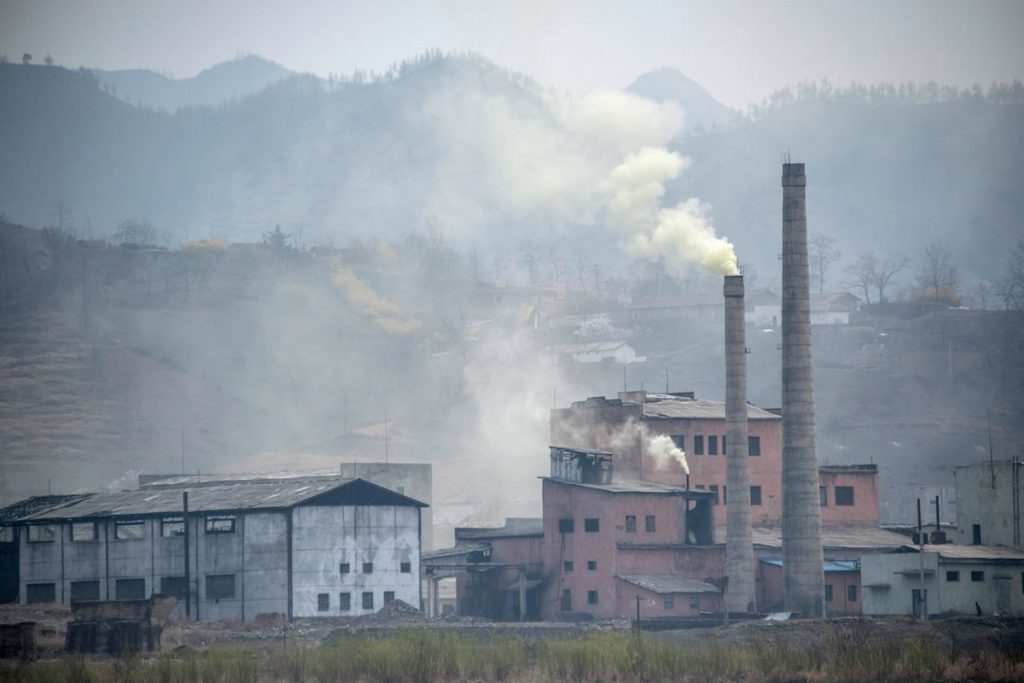
It is known that more than 90% of pollution-related deaths occur in low-income and middle-income countries. The correlation below approves this statement- it can be seen that the majority Central and Eastern European countries that have lower GDP had higher total number of deaths in the year 2017.
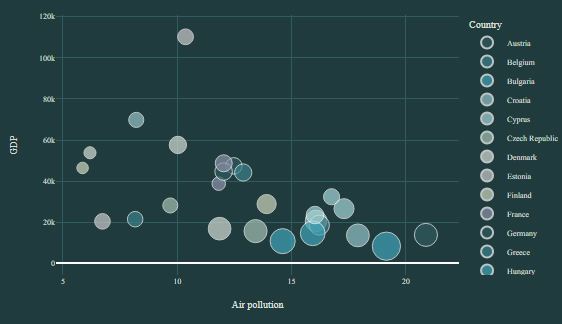
Further on, the project analyzes the situation in 10 Central Europe countries. The chart below illustrates that worst country in air pollution and total death numbers is Poland and the best- Sweden.
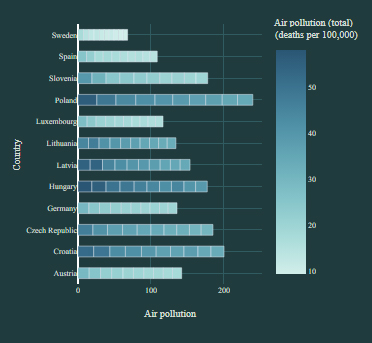
The project delves deeper into 3 types of air pollution: outdoor ozone, indoor and outdoor particulate matter. The leading type is outdoor pollution. The highest air pollution is in Hungary. Just like in the previous chart, Poland, Lithuania, Latvia and Croatia has also high results. Some countries like Sweden or Austria have almost no indoor pollution.
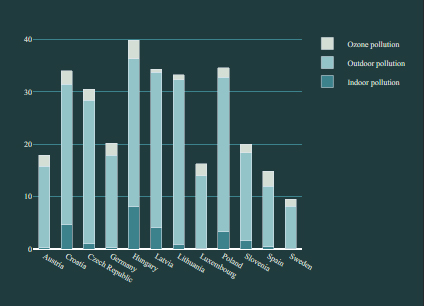
The research has shown that throughout 2000-2017 there was a strong tendency of decreasing number of deaths in Central European countries. The project took a look at Hungary, as the highest pollutant, and saw that the outdoor ozone pollution has even increased, outdoor particulate matter and indoor pollution decreasing not sharply.
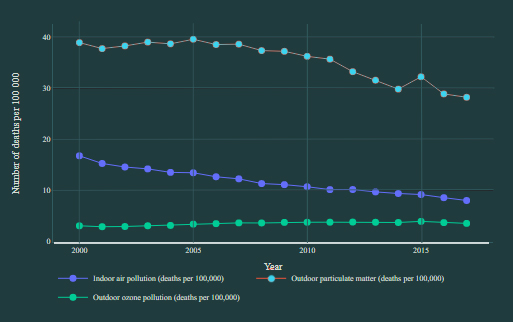
The final result- an interactive dashboard- has been created with Jupyter Notebook. Data was taken from Our World in Data.

